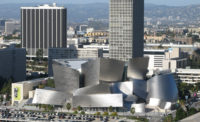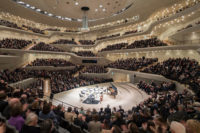The Getty Research Institute in Los Angeles has procured the early archives of the “world’s most famous living architect,” in the words of director Thomas W. Gaehtgens: Frank Gehry. The acquisition, announced in late March, will cover three decades of Gehry’s career—from 1954 to 1988—and comprise thousands of sketches, drawings, and photographs. It will also contain hundreds of office records, personal papers, and models for 283 projects, including his Santa Monica residence, the Walt Disney Concert Hall competition, and the Vitra Design Museum.
The extensive collection, part of which is being donated by Gehry and the rest purchased, represents a significant step for the Getty, which has been making efforts to comprehensively document the culture and influence of Southern California architecture. “Who has really made Los Angeles architecture go beyond L.A.?” asks Maristella Casciato, senior curator of architectural collections. “I think that Gehry is the perfect answer to that question.”
Though the archives only include work predating the architect’s 1989 Pritzker Prize, the time period is crucial in understanding Gehry’s later work, according to Casciato—especially in showing how his presence around the L.A. art scene during the 1960s and ’70s shaped his practice. Also apparent is the centrality of sketching and model-making to the 88-year-old architect’s design process. “The models are 3-D answers to his sketches,” says Casciato. Whether or not the Getty will obtain his later archives has not yet been discussed.
Over the next two years, materials will be transported from Gehry’s office and L.A. model warehouse to the Getty. While drawings, photographs, and other papers will be kept at the Getty Research Institute, the plan for models is storage at an off-site facility. Three-dimensional photographs of the models, along with other selections from the archives, will be digitized and eventually put online. “Making Frank’s legacy accessible was an important concern for both him and the Getty,” says Casciato.
All the fuss seems to be lost on Gehry. In a statement, he said, “I’m very moved that this great institution, with its resources to search for the best examples of creativity in our world, has found me an interesting party.”






Post a comment to this article
Report Abusive Comment